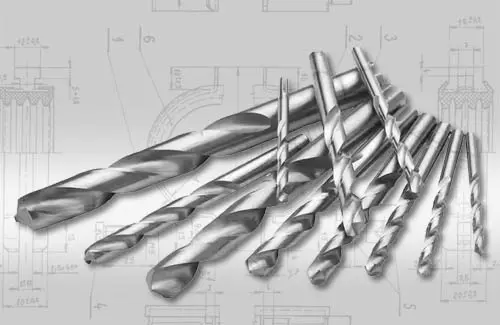The regular price is the current manufacturer's recommended price! FREE shipping for orders over EUR 41,67 within CZ+SK (PPLparcel)

These materials include metal, wood, plastic, concrete and others. The body of each drill is usually formed by a right-handed flute in our picture no. 6, which is terminated by a cutting edge and a lip (20., 19.). At the other end of the drill there is a shank that can be fixed in the drill chuck.
There is a huge number of types of drills on the market, which we have categorized for you in an article specifically dedicated to this issue. However, it can be said that drills are divided according to the type of material being machined, shape, type of clamping and the material from which the drill is made.
The following picture shows the technical terminology of the drill:

1. Axis
2. Shank - straight, cylindrical
3. Drill body
4. Overall length L
5. Flute length l (helix)
6. Flute
7. Front flank surface
8. Front flank surface width
9. Core
10. Core thickness
11. Margin
12. Margin width
13. Secondary lip
14. Relief
15. Relief depth
16. Heel
17. Flank
18. Face
19. Lip
20. Cutting edge
21. Outer point
22. Cross cutting edge
23. Cross cutting edge length
24. Lip length
25. Drill diameter
26. Relief diameter
27. Back taper ratio
28. Lead of helix
29. Angle of twist (λ)
30. Cross cutting edge angle (ψ)
31. Nose angle (ε)
32. Lip angle (α)
The most common drills include, without a doubt, the helical (cylindrical) drill, the best-selling in our country, the "black" drill of the 221121 standard or the higher-quality ground version of the norm PN2913.
Are you interested in how to resharpen a drill that no longer drills according to your wishes? We have written instructions for you in a special article.
Other articles:
Forstnerovy vrtáky
Užití stupňovitých vrtáků
Jaké jsou druhy vrtačkových sklíčidel?
Co je středící vrták?